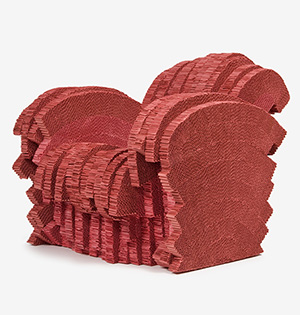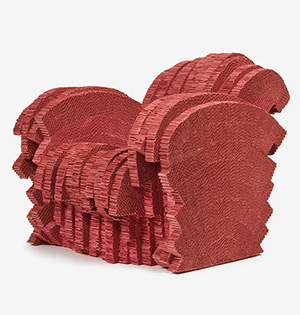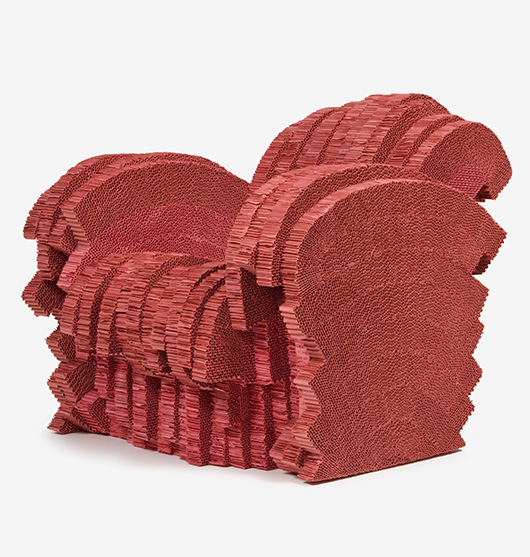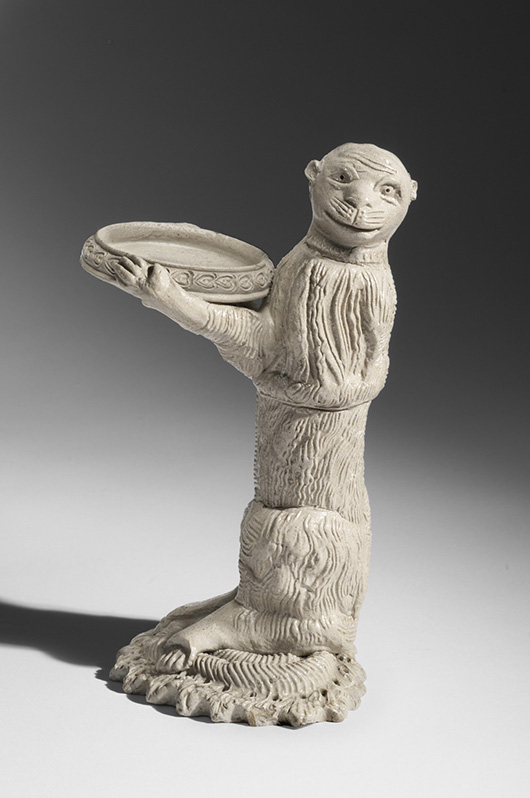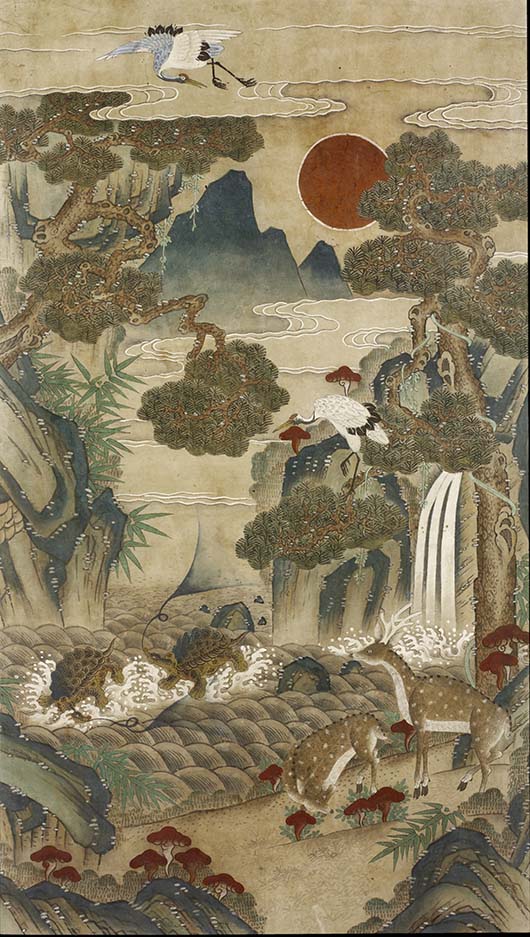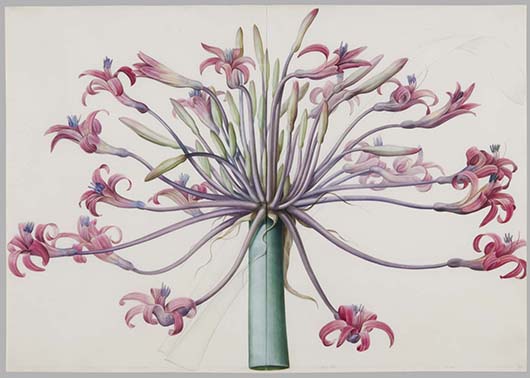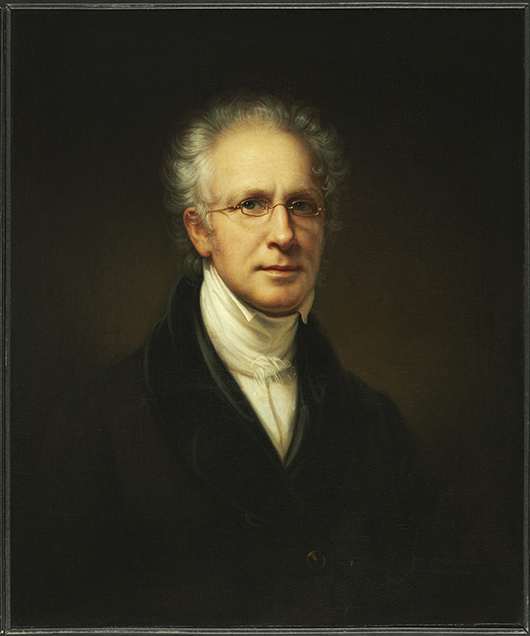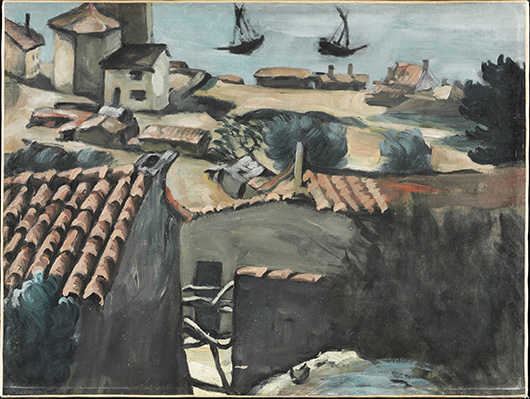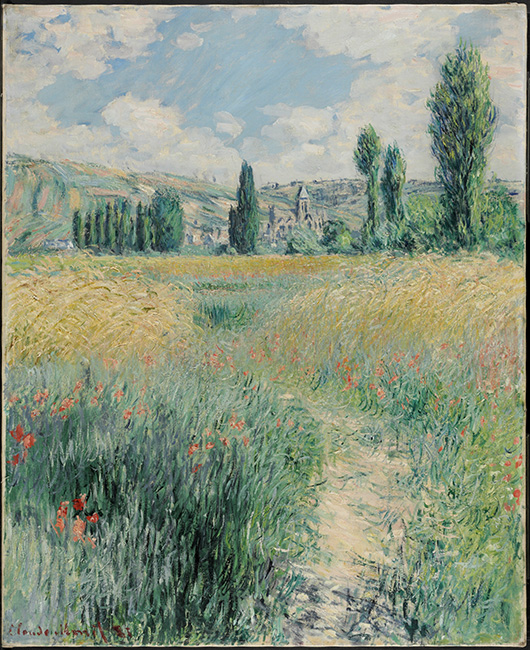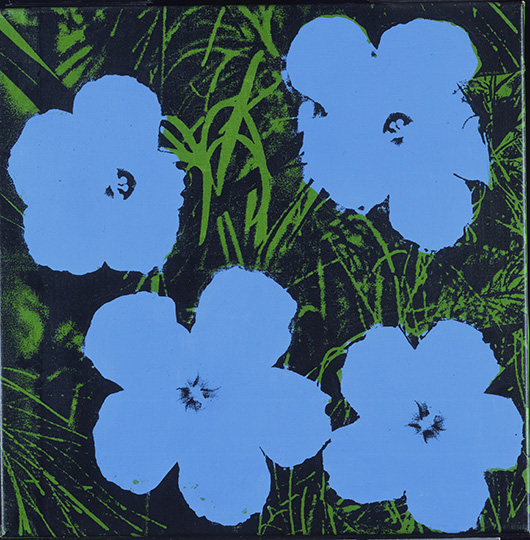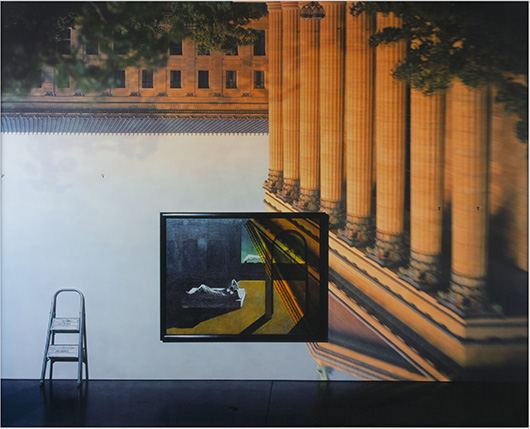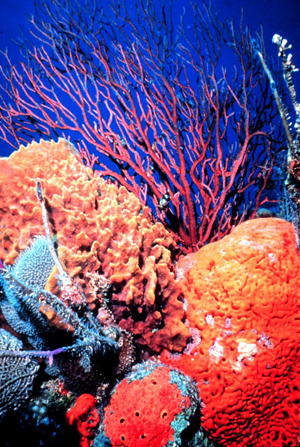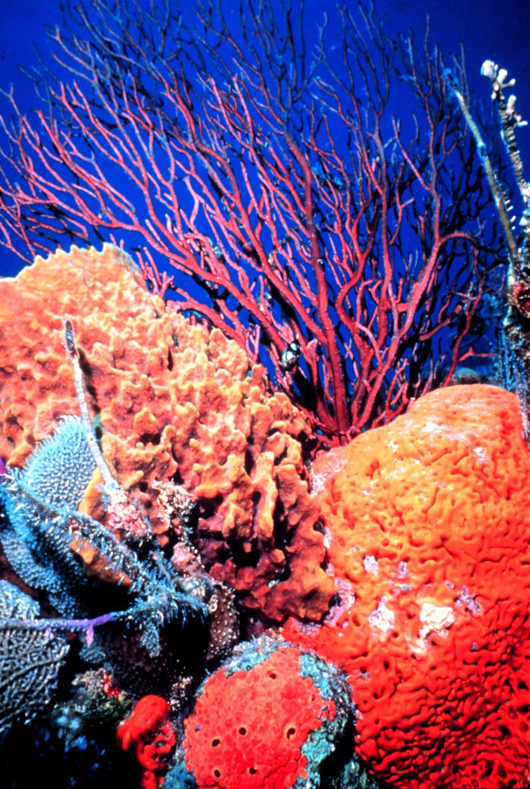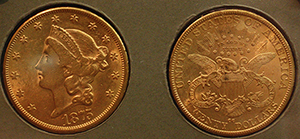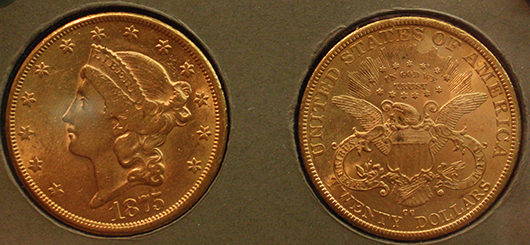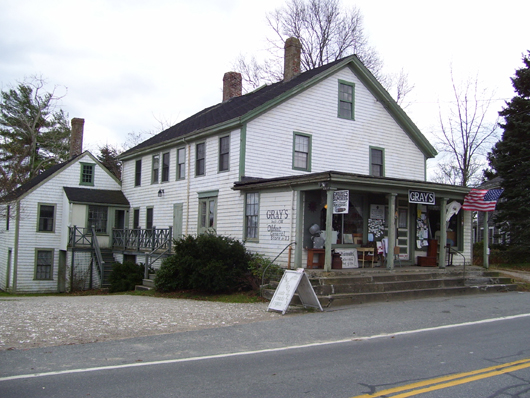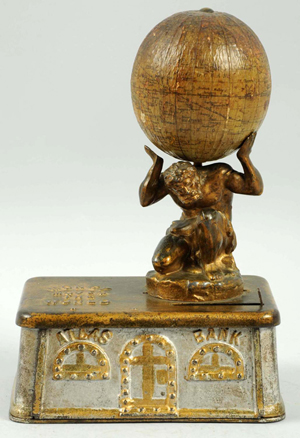
Atlas cast-iron mechanical bank, $12,000. Morphy Auctions image. DENVER, Pa. – There were no bank “bailouts” required at Morphy’s June 22 antique toy auction, with Internet live bidding through LiveAuctioneers. Collectors eagerly stepped up to the plate to stake their claims on an excellent assortment of cast-iron mechanical and still banks – a category that ended up leading all others in the $502,000 event. Prices quoted in this report are inclusive of 20% buyer’s premium.
Seven of the top 10 lots were banks made during the late 19th and early 20th centuries. Among them was a figural cast-iron bank depicting the muscular Greek god Atlas with the world hoisted onto his back. Complete and in near-mint condition, the coveted moneybox swept past its $6,000-$8,000 estimate to settle at $12,000.
Another strong entry within the mechanicals was a Lighthouse bank with realistically detailed red brick tower. The 10½-inch cast-iron piece surpassed expectations, garnering a winning bid of $10,800.
Other mechanical banks in the top 10 included three J. & E. Stevens productions. They included a Magic bank, pistachio green with red version, with a front door that opens to reveal a smartly dressed cashier, $8,400; and a near-mint-plus Owl Turns Head bank, which more than doubled its high estimate at $4,500. A Stevens Perfection registering mechanical bank pocketed $10,800.
A beautiful, all-original example of a beady-eyed Pelican still bank was a crowd favorite. The near-mint-plus sea bird flew past its $6,000-$8,000 estimate to land at $11,400. Another popular non-mechanical bank was a Stevens circa-1880 “General Butler,” which was offered together with a framed picture of its namesake, Civil War general Benjamin Franklin Butler. Estimated at $3,000-$4,000, it took in a tidy $8,400.
The 595-lot sale had opened with more than 140 antique occupational shaving mugs from the Ray and Theresa Jones collection. Each mug from the barber-shop era of more than a century ago was an individual expression of its owner, typically emblazoned with a depiction of the person’s occupation and his name in gold. A colorful mug with an eye-catching image of a red and white lighthouse by the sea sailed past its $800-$1,200 estimate to close at $3,900.
Not far behind was a mug depicting a very different type of lighting source. The well-detailed image was of a worker, with rolled-up shirtsleeves, seated at a workbench and handcrafting light bulbs. With expectations of making $700-$900, it illuminated the auction gallery as it hammered $3,000.
“Shaving mug collectors really go for the unusual occupations,” said Morphy Auctions CEO Dan Morphy. “We knew this mug was rare, but when it comes right down to it, it’s always the collectors who call the shots on value. Obviously there were at least two bidders who were determined to take this particular mug home – that’s all it takes for an estimate to be left in the dust.”
Three early barber poles were included alongside the selection of shaving mugs. An aggressive bid of $5,700 clinched a handsome 44-inch red and gold striped pole with a three dimensional eagle on its finial.
Other auction highlights included a boxed Linemar Disney friction fire engine toy, $3,300; and an extremely rare “Moving Pictures” kaleidoscope candy container made by West Bros. & Co. of Grapeville, Pa. Constructed of metal with an applied red paper label, the candy container even retained its original box. It was bid to the upper reaches of its presale estimate, realizing a very sweet $7,200.
To discuss consigning to a future toy and bank sale at Morphy’s, call 717-335-3435 or email serena@morphyauctions.com.
# # #
ADDITIONAL LOTS OF NOTE
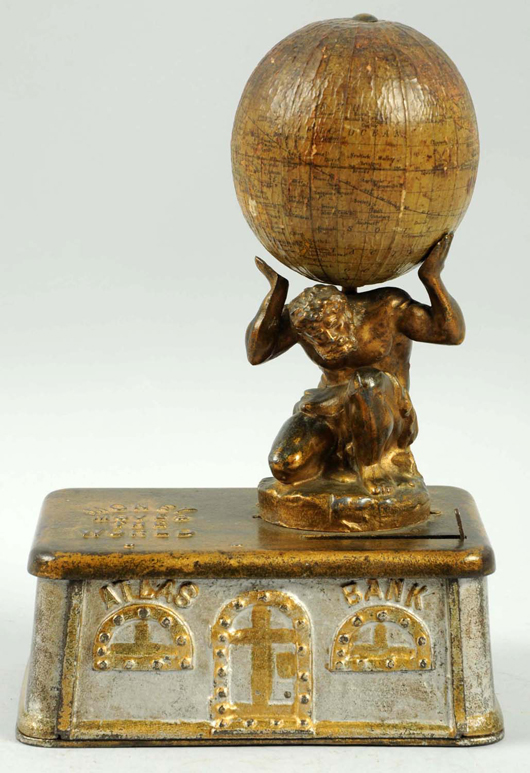
Atlas cast-iron mechanical bank, $12,000. Morphy Auctions image. 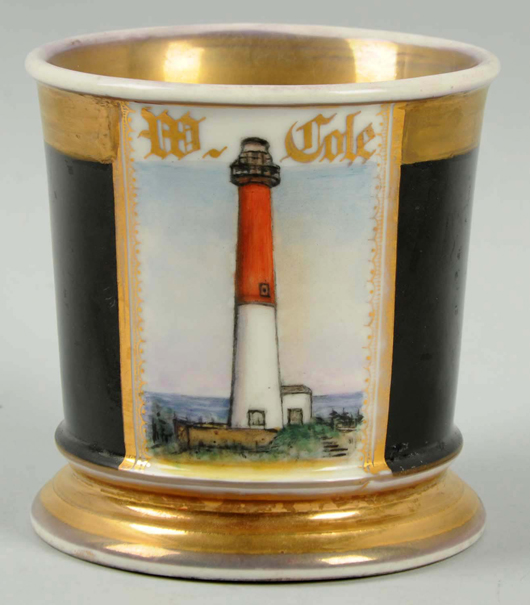
Antique occupational shaving mug depicting a lighthouse, $3,900. Morphy Auctions image. 
Early 44-inch red and gold striped pole with a three dimensional eagle on finial, $5,700. Morphy Auctions image. 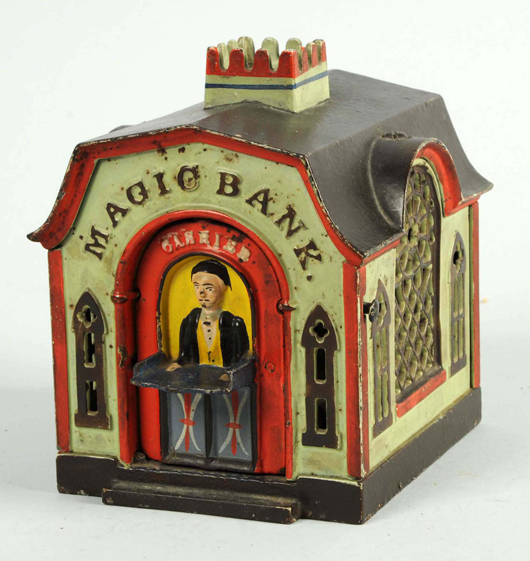
J. & E. Stevens Magic cast-iron mechanical bank, pistachio green with red version, $8,400. Morphy Auctions image. 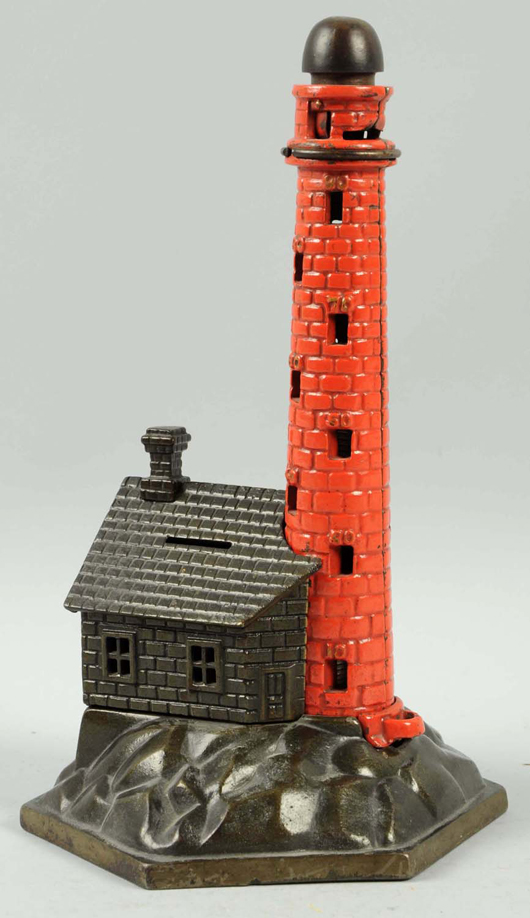
Lighthouse cast-iron mechanical bank with realistically detailed red brick tower, $10,800. Morphy Auctions image. 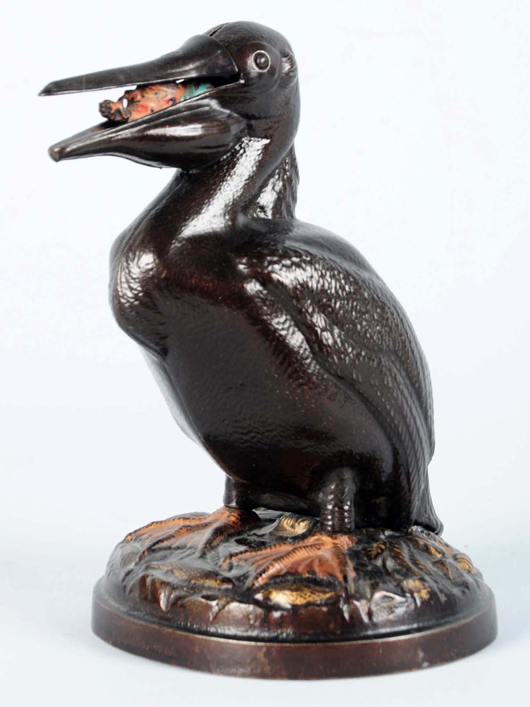
Pelican cast-iron still bank, $11,400. Morphy Auctions image. 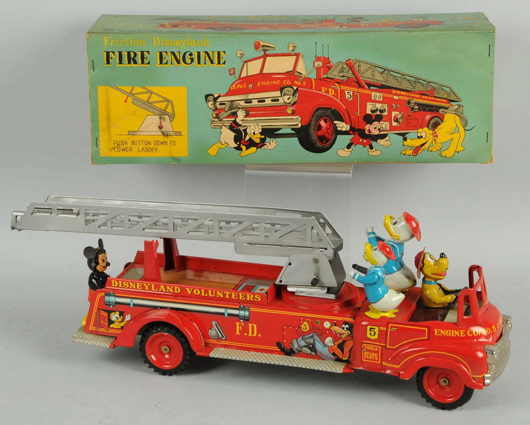
Linemar lithographed-tin friction fire engine with Disney characters, accompanied by original box, $3,300. Morphy Auctions image. 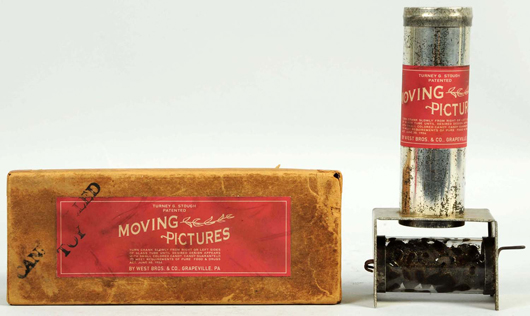
Moving Pictures kaleidoscope candy container made by West Bros. & Co. of Grapeville, Pa., accompanied by original box, $7,200. Morphy Auctions image.


